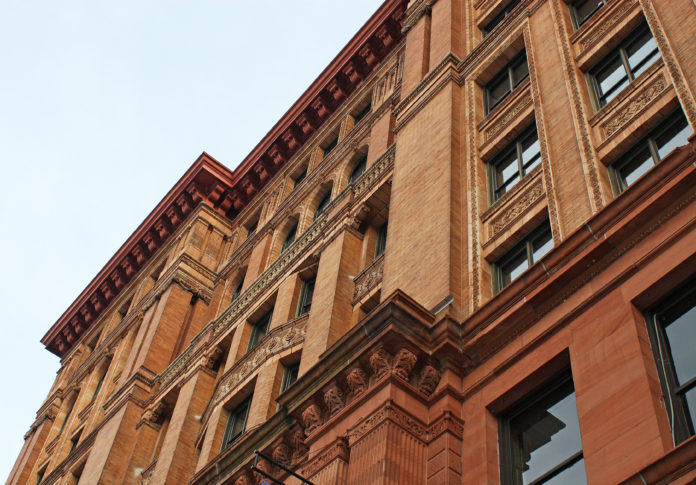Part III
Gentrification is defined as a shift in an urban community towards wealthier residents and/or businesses and increasing property values. Gentrification is typically the result of investments in a community by real estate development businesses, local government, or community activists. On the positive side it can spur economic development, attract new businesses and lower crime rates. On the negative side gentrification can and does lead to population displacement and migration that usually involves wealthier newcomers pushing out poorer residents.
In Brooklyn and in particular the Flatbush and East Flatbush sections of the borough gentrification is evidenced by pre-gentrification poorer residents now unable to pay the increased property taxes and rents and are now driven out. Old buildings are now converted into residences and shops. New businesses trigger commercial rents and now cater to a more affluent consumer base further increasing the appeal to higher income migrants and decreasing the accessibility for the poor. Local governments, and New York City’s government is no exception, can favor gentrification because of the increased taxes associated with new high-income residents as well as “dealing with the poor problem.”
A Sample: The Flatbush and East Flatbush Gentrification
In the wake of the September 11, 2001 attacks the lower Manhattan section of the City saw a movement of high-income, professional, and entertainment classes move into areas of Brooklyn. This movement of hitherto outsiders into parts of Brooklyn have displaced and continue to displace the poor and working class residents that are mostly Black and minority. The neighborhoods and communities are being rapidly transformed. Today, real estate rates have skyrocketed and neighborhoods impacted by this rabid gentrification continue to change at an alarming rate. New services, businesses, and better and more responsive neighboring policing also cater to this new demographic.
Historically Black areas in Brooklyn are now becoming increasingly whiter and wealthier (according to the New York Times). There is also and accompanying cultural marginalization and physical expulsion of original populations.
PROFILE OF THE NEW WHITE BROOKLYN RESIDENT (S) AS A CONSEQUENCE OF OVER 10 YEARS OF SUSTAINED GENTRIFICATION
White (Caucasian)
Creative, entertainment class types
Recent university graduates
Fledgling new professionals
Empty-nesters with starting families
Bankers
Lawyers
A PHILOSOHICAL LOOK AT GENTRIFICATION
Gentrification is a dialectic of progress and loss, novelty and nostalgia. Subjective landscapes and new realities are built on economic realities and social infrastructures intertwined and locked into class and race. In this context catch phrases like “good schools,” “social improvements” and “neighborhood regeneration” are used by newcomers to mask the engine of putrid gentrification.
It is a new way to be bourgeois while presiding over the destruction of non-middle class space. This development is focused on new, high-priced restaurants and retail outlets, and high rents and real estate. New social and cultural entities are established not to cater to the traditional community and population but this new, affluent clientele. For example, Barclays Center while located in Downtown Brooklyn is not an economic engine for the community because its billing prices are not within reach of ordinary working class Brooklynites.
EXAMPLES OF NEIGBRHOOD GENTRIFICATION IN BROOKLYN (2014)
Parkslope and Carroll Gardens are two neighborhoods where residents earning $100,000 or more rose from 43% in 2010 from 28% in 1990
In Brownsville and Ocean Hill households earning $25,000 rose from 46% from 43% today.
In Williamsburg and Greenpoint the proportion of residents holding graduate degrees quadrupled to 12% while that number was 4% flat in East New York and Starrett City.
Brooklyn is home to four (4) of the top gentrifying zip codes in the United States.
Fort Green and Clinton Hill (11205) saw a jump in the white population from 19.7% in 2000 to 49.3% in 2010. This population has displaced a Black middle class neighborhood.
Williamsburg (zip code 11206) saw its white population go from 16.6% to 45.6 %, zip code 11237 saw its white population go from 22.6% to 42.3% and zip code 11238 (Prospect Heights) saw its white population grow from 16.8% to 38.3% – all between 2000 and 2010.
Finally the most rapidly gentrified neighborhoods in Brooklyn are Sunset Park, Flatbush and East Flatbush and Downtown Brooklyn.
So how can we, the people effectively fight gentrification? Here are some of my suggestions.
Pay attention to nearby wealthy neighborhoods where empowered residents fight to keep new people out. This is done through bank redlining and other discriminative practices to keep “them” out. When that happens traditional poor and working class neighborhoods are targeted by gentrifiers “locked out” of these neighborhoods.
So you could say that the real enemy indirectly is not the gentrifiers or developers trying to serve them. It is the rich people who use their influence to stymie and hobble development in their neighborhoods. The more they fight to depopulate desirable neighborhoods, the more people are left seeking alternative neighborhoods. It’s that simple.
Development by itself is not the engine of gentrification. Rather, it is city zoning laws, processes and other regulations that retard development in desirable areas.
So its going to be collective citizen activism that calls for radical reforms and liberalization of zoning processes in already wealthy areas aided and abetted by New York City government acting in the interests and on behalf 0f these rich groups. Citizen activism is also needed to fight those groups that abuse zoning laws and processes.
























































 and then
and then